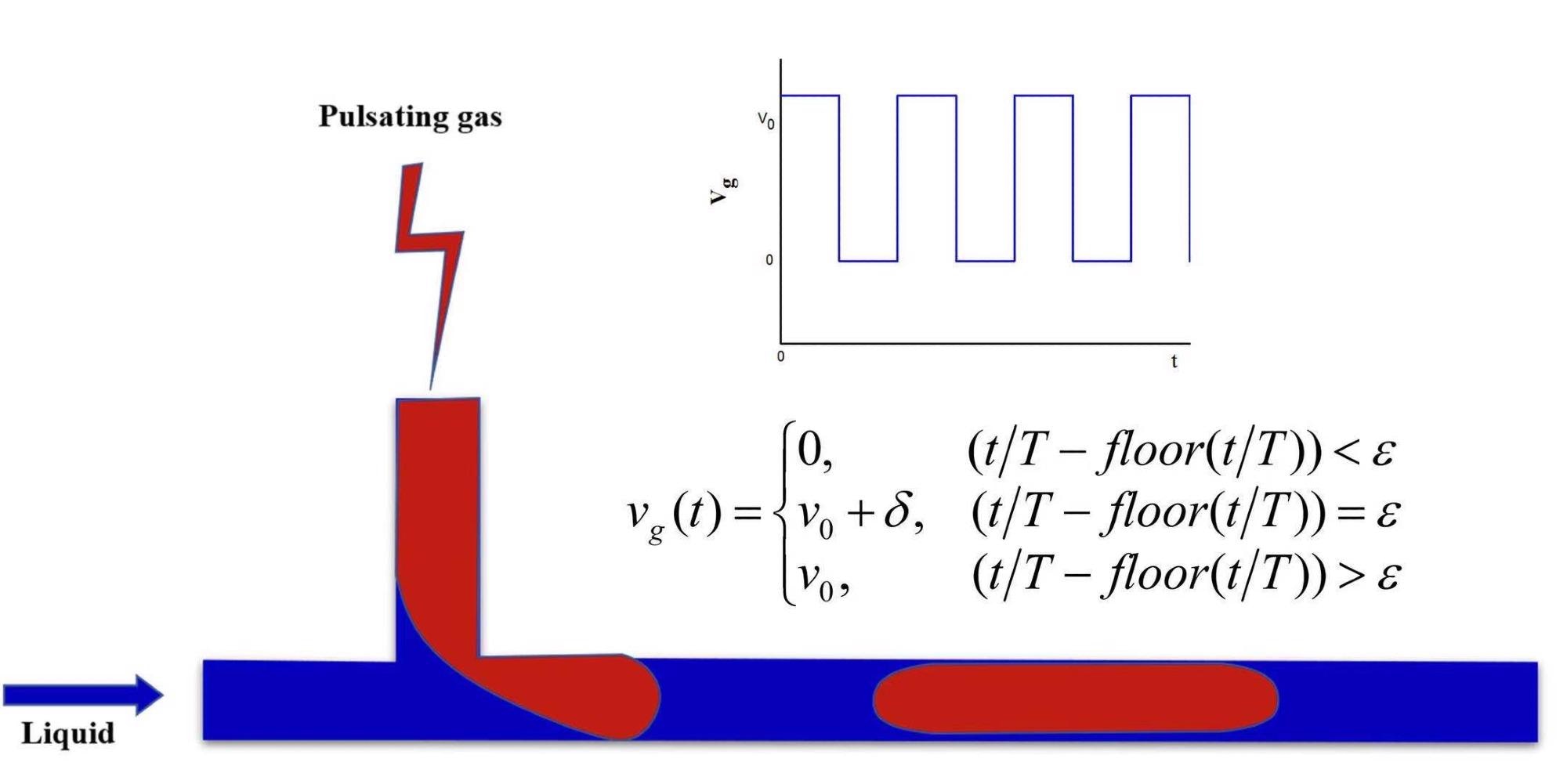Apr 12 2021
Microreactors hold great promise for the large-scale production of advanced materials and chemicals in continuous flow mode. This is due to their several benefits like superior efficiency for heat and mass transfer, easy scale-up, high controllability, etc.
 Regulation of Gas-Liquid Taylor Flow by Pulsating Gas Intake in Micro-channel. Image Credit: Shanghai Advanced Research Institute.
Regulation of Gas-Liquid Taylor Flow by Pulsating Gas Intake in Micro-channel. Image Credit: Shanghai Advanced Research Institute.
Among various flow patterns, gas-liquid Taylor Flow has been established as a perfect flow regime for the optimization of chemical reactions. But to date, there has been a lack of technique for achieving accurate control of the Taylor flow pattern.
Under the guidance of Professor Zhiyong Tang and Associate Professor Jie Zhang from the Shanghai Advanced Research Institute (SARI) of the Chinese Academy of Sciences (CAS), a team of researchers was motivated by such a challenge to devise a new, innovative technique of adding pulsation field to accurately control the gas-liquid Taylor Flow.
The findings of the study were reported in a paper published in the Chemical Engineering Journal. As part of the study, the researchers employed a simple valve arrangement to initiate the pulsation field. Thus, they were able to produce periodic acceleration and deceleration motion of liquid slugs.
The researchers combed the visual flow experiments by using computational fluid dynamics (CFD) simulation to investigate the temporal-spatial migration of the Taylor flow pattern under pulsating gas intake conditions.
The team used a high speed camera to monitor the trajectory of a gas-liquid interface by applying the Lagrangian method. The numerical simulation helped them to obtain the flow field distribution at various moments by applying the Euler method.
At the same time, the researchers also performed an in-depth analysis of the forces involved during the formation of bubbles and the properties of bubble length and velocity under pulsation.
An analysis of the temporal-spatial migration of the pattern by the researchers showed that there is a possibility that the pulsation will increase the power of inertial force on the Taylor flow pattern. It is also possible that the pattern will be destroyed if the pulsation energy surpasses a specific value.
This study offers a new technique to accurately control the gas-liquid Taylor flow. In addition, it will also power future applications of this technique to strengthen various gas-liquid reactions in continuous flow.
This study was financially supported by the Youth Innovation Promotion Association of CAS, the STS Program of CAS and the Frontier Scientific Research Project funded by Shell.
Journal Reference:
Zhang, Y., et al. (2021) Regulation of gas-liquid Taylor flow by pulsating gas intake in micro-channel. Chemical Engineering Journal. doi.org/10.1016/j.cej.2021.129055.